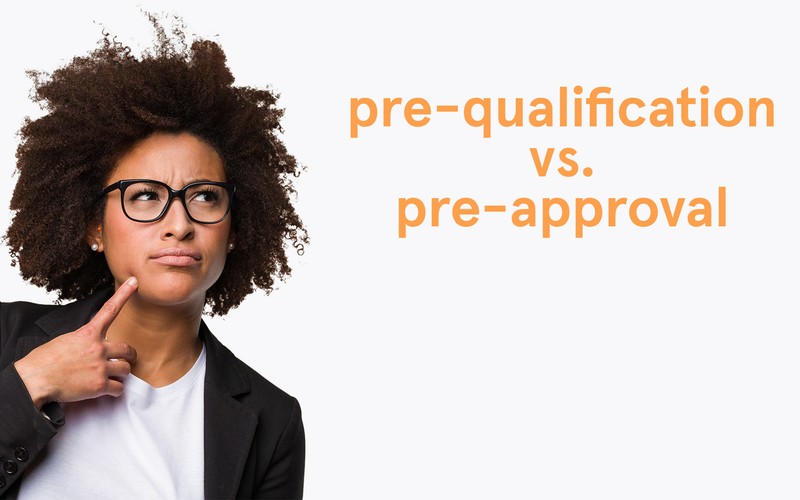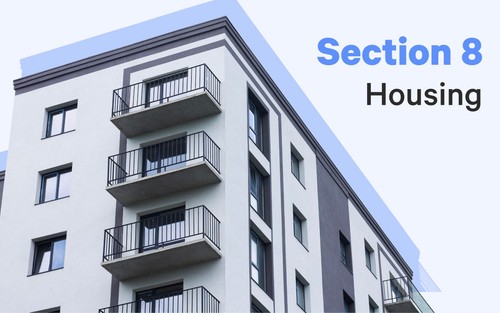You’re ready to purchase your first home, and it’s time to get a mortgage. But before you can even start looking at homes, you’ll find terms like “pre-qualification” and “pre-approval” popping up. It’s essential to understand what these terms mean—and how they can help you get closer to your goal of homeownership.
Pre-qualification and pre-approval are both types of mortgage approvals necessary to prove you can afford a mortgage. Typically, pre-qualification is considered the first step in the home-buying process, while pre-approval is much more detailed and involved.
Let’s talk about pre-qualification and pre-approval and when you’ll need each.
What is mortgage pre-qualification?
When you start looking for homes, most real estate agents will want to know that you have the means to either purchase the home outright or get a loan. To get a pre-qualification, you need to get in touch with your lender and give them some basic financial information, such as your income, investments, and what you have available to put down as a deposit.
Based on this self-reported information, the lender will give you a “pre-qualification letter,” which gives you an idea of how much house you can afford and any real estate agent you’re working with.
At this stage, all your information is self-reported, so the lending institution will not be pulling your credit report or reviewing financial documents. Mortgage pre-qualification can be done quickly, typically within an hour. This does mean, however, that pre-qualification is less reliable than a pre-approval and that any quote you’ve been given is based on the numbers you’ve provided. This quote can change once the lender checks your credit score and reviews your financial documents more closely.
What is mortgage pre-approval?
If you’re looking at homes, getting a mortgage pre-qualification is enough to get you through the doors of a real estate agent’s office and to set up viewings. If you’re ready to put in an offer, however, you’ll need more. That’s when the mortgage pre-approval kicks in. In today’s market, offers without a pre-approval letter are rarely considered, so getting one is essential if you’re serious about purchasing a property.
To get a mortgage pre-approval, you’ll need to complete a mortgage application with a lender, who will conduct an extensive credit and financial background check. This involves verifying all the information you provide, such as your pay stubs, W-2 statements, and tax returns. At this stage, the mortgage lender will typically pull a hard inquiry on your credit report and determine your debt-to-income ratio, allowing them to see how much you can borrow.
Once you’re preapproved for a mortgage, the lender will provide a written conditional commitment for the exact loan amount and the interest rate. Some may even allow borrowers to lock in an interest rate.
Remember, however, that pre-approval is not a guarantee of a final mortgage loan approval. Once you’ve decided on the home you’ll buy, your application will go through full mortgage underwriting, and the lender will order a home appraisal and a title search. You are not obligated to get a mortgage with this lender at this stage. Even if one lender has preapproved you, you can still shop around, look at other lenders, and see where you can get the best deal.
Critical differences between pre-qualification and pre-approval
While both pre-qualification and pre-approval give the borrower and the lender an idea of how much can be borrowed, there are also some significant differences between the two, such as:
- Credit check: The pre-qualification process will often not include a credit check. A pre-approval requires a hard inquiry on the borrower’s credit report, which can impact their credit score.
- Verification: A pre-qualification depends on the financial information that’s self-reported by the home buyer. For pre-approval, however, the bank or lender will verify all information.
- Documentation: For a pre-qualification, you will be required to estimate your credit, debt, income, and assets. For pre-approval, you’ll need to fill out a mortgage application and provide documentation as proof of financial details.
- Mortgage amount: Your pre-qualification letter includes an estimate of how much you can borrow to buy a home. A pre-approval is a preliminary mortgage offer.
- Timeline: It can take minutes to get a pre-qualification, while a pre-approval can take a few days.
- Seriousness: A pre-qualification will get you through the door and allow you to visit properties, but an offer that’s made with a pre-qualification letter will not be taken seriously by sellers. A pre-approval, however, tells the real estate agent and the seller that you’re serious about buying the home and gives them confidence in your ability to get a mortgage.
Which should you choose?
Whether you get a mortgage pre-qualification or a pre-approval will come down to how far ahead you are in the mortgage process. If you’re a first-time homebuyer, you might find it helpful to get prequalified so you can know how much you can borrow.
If you’re ready to put in an offer, however, you need a pre-approval letter. Especially in the current market, where there may be multiple offers on a home, a pre-approval assures the seller that you’re a serious buyer whose finances and creditworthiness back up their desire to purchase the home.
Frequently asked questions
Here are some frequently asked questions by home buyers about mortgage pre-qualification and pre-approvals.
Why is getting approved necessary?
For a seller, a prospective buyer being preapproved means that their financial situation and ability to purchase the house has been verified, which increases their chances of getting the house.
For a lender, the preapproved borrower acts as an assurance that they can afford the home loan and pay their mortgage on time.
And for you, the homebuyer, a pre-approval letter outlines how much you can borrow and at what interest rate. The amount the bank is willing to loan you is your upper limit and gives you and your real estate agent a clear idea of the homes you can afford, which can aid in your home search.
What information do I need to provide to get prequalified or preapproved?
For pre-qualification and pre-approval, you will need to provide information about your credit, income, assets, and debt. However, while no documentation is required to get prequalified, you must submit in-depth details when looking for pre-approval. Some of this documentation includes:
- Copies of pay stubs from your employer
- Recent bank statements
- Proof of funds for your down payment
- Business tax returns and/or W-2 statements
- Proof of assets, including Roth IRA, 401 (k), and stocks
- Proof of identification
Do I have to spend the amount I’m preapproved for?
Definitely not. Look at the amount you’ve been approved for as the absolute upper limit of what you can afford when you’re house-hunting. The lower you go below that number, the lesser your overall debt and, therefore, mortgage payments will be.
All the preapproved number tells you is how much debt is available to you. However, your finances may not allow for a high mortgage, or perhaps you have other financial goals you’d like to hit that would be better served with a lower mortgage.
Ultimately, the amount you’re preapproved for measures how much the bank is willing to give. It doesn’t have to be the amount you take.
Is pre-approval the same as applying for a loan?
The process of getting preapproved is very similar to that of applying for a home loan. You’ll submit all the information for a mortgage loan, and the bank or lending institution will do a thorough credit and financial background check, just as they would for a loan.
The reasoning behind this is simple. What the lender is effectively doing is giving you a conditional loan. If, after pre-approval, you were to find a home that passes an appraisal and your loan application has gone through full mortgage underwriting, they would offer you this loan. The pre-approval is one step before the actual offering of the loan, so the lender needs to apply all checks and balances at this stage so they can offer you the loan once all conditions are met.
That said, a pre-approval is still not a loan. If a lender has preapproved you, you can still talk to other lenders, negotiate better deals elsewhere, and even get a mortgage with a different lender if you find a better offer.
How long does it all take?
While much of it can depend on the lender, pre-qualification is typically a quick process that can be done online. You’ll often hear back on your pre-qualification application within hours. Preapproval can take longer, partly because the application and documentation alone can take up a lot of time but also because the verification from the lender’s end requires due diligence. A pre-approval can often take up to 10 business days.
How long are pre-approvals valid?
Since a borrower’s financial situation can change over time, pre-approvals expire after 60 to 90 days.
The bottom line
Suppose you’re ready to buy a new home, whether as a first-time buyer or an experienced real estate investor, you need to get your paperwork in order. That means getting prequalified or preapproved for a mortgage.
It’s important to note that there is more than one way to purchase an investment property. If you’re ready to invest in a rental property that provides monthly cash flow, let us help. At Arrived, we’re experts at finding profitable rental properties that grow in value over time. You can purchase shares in these rentals and start growing your real estate income today. Please browse through our available properties to see what we currently have available.
The opinions expressed in this article are for general informational purposes only and are not intended to provide specific advice or recommendations for any individual or on any specific security or investment product. The views reflected in the commentary are subject to change at any time without notice. View Arrived’s disclaimers.







